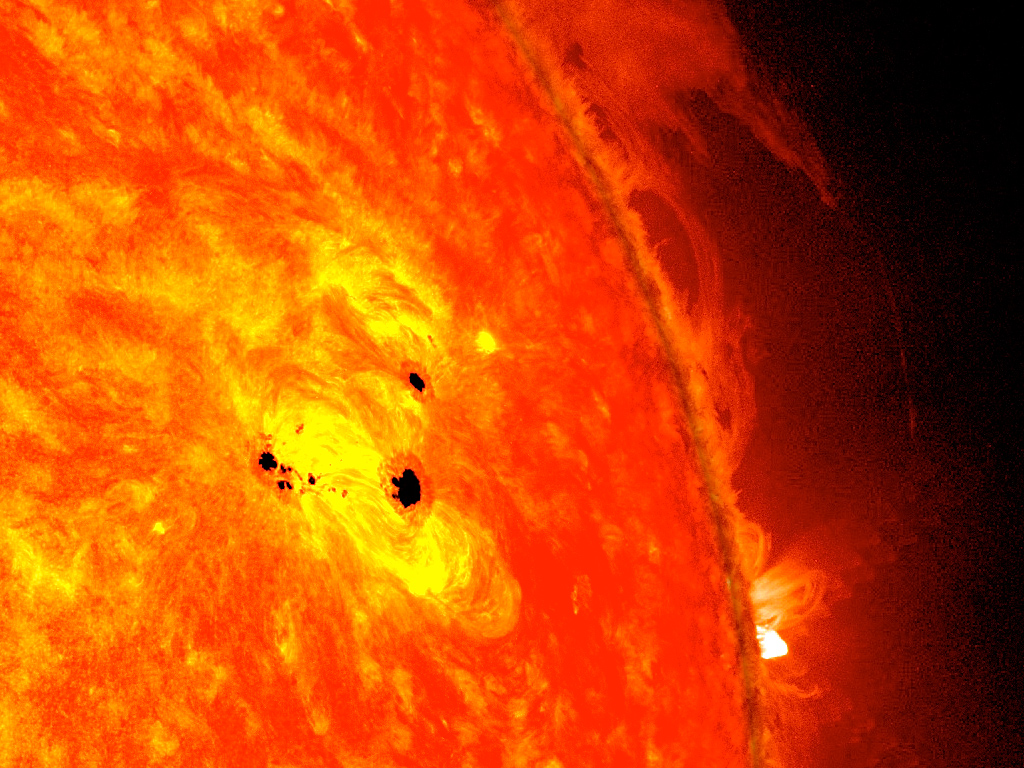How can the solar cycle threaten technology on Earth?

Every week, the readers of our space newsletter, The Airlock, send in their questions for space reporter Neel V. Patel to answer. This week: how the solar cycle could impact human technology on Earth.
What technological disruptions will the periodic (11-year) solar sunspot cycle cause to humans on Earth and in the planet’s orbit? —Victor
Sunspots are dark, cool patches that appear on the surface of the sun. Their exact cause is not understood, but we know they’re produced through interactions with the sun’s magnetic field. Solar flares and coronal mass ejections (sudden eruptions of plasma) are known to happen near sunspots. You can tell how active the sun is by how many sunspots there are, so scientists use them as a proxy for gauging solar activity patterns.
Every 11 years or so, the sun’s magnetic field completely flips, and the north and south poles switch places. Between flips, the sun’s activity begins at a solar minimum, rising to a solar maximum midway through the cycle and creating up to hundreds of sunspots a day before falling back to a minimum again. Scientists have recorded the solar cycles since 1755. The transition between cycles 24 and 25 is happening right now. The last solar maximum was in 2014.
(Scientists have also studied historical sunspot patterns that suggest additional cycles governing solar activity, some of them lasting 88, 200, and 2,300 years.)
Increased solar activity means the sun spews off far more highly energized particles through space that are potentially dangerous to electronics and power grids. Earth’s magnetic field can deflect this solar wind and keep the planet safe, but if a solar storm is too powerful, those winds will break through. A really powerful solar storm could wipe out power for millions or even billions of people on the surface.
Up in orbit, things are even more dangerous. Powerful solar winds caused by heightened solar activity could easily knock out GPS and telecommunications satellites. Charged particles could fry the electronics in any spacecraft that’s home to astronauts and shut down life-support systems. And solar activity can produce intense amounts of radiation that threatens astronauts' health.
The truth is we’ve skated through the solar maxima of the last century with few problems, apart from having to ground flights occasionally (like in Sweden in November 2015, when a solar flare caused radar malfunctions) or dealing with damaged GPS or electrical equipment. The biggest space-weather-related event in recent times was on March 13, 1989, just before the solar cycle hit its maximum the following November. A severe geomagnetic storm caused by a coronal mass ejection blew out a transformer for the Hydro-Québec power network in Canada. A blackout lasted nine hours and affected over 6 million people.
That doesn’t mean we’ll always be so lucky. The equipment used to forecast space weather and provide early warnings is aging fast. Many experts think we’re long overdue a cataclysmic storm on the scale of the Carrington Event that occurred more than 150 years ago. If we experienced something like that today, it could result in up to $2 trillion in losses in the first year alone. In other words, Victor, it’s probably not the normal 11-year solar cycle we need to worry about—it’s the extreme outlier storms that hit every couple of centuries.
Deep Dive
Space
How to safely watch and photograph the total solar eclipse
The solar eclipse this Monday, April 8, will be visible to millions. Here’s how to make the most of your experience.
How scientists are using quantum squeezing to push the limits of their sensors
Fuzziness may rule the quantum realm, but it can be manipulated to our advantage.
The race to fix space-weather forecasting before next big solar storm hits
Solar activity can knock satellites off track, raising the risk of collisions. Scientists are hoping improved atmospheric models will help.
Stay connected
Get the latest updates from
MIT Technology Review
Discover special offers, top stories, upcoming events, and more.